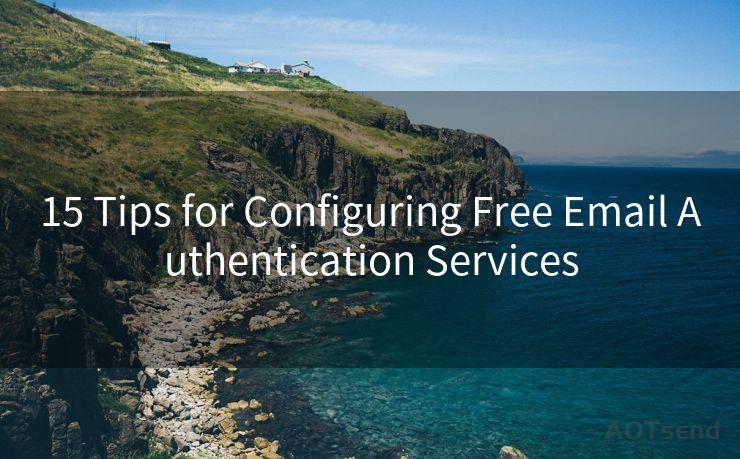15 Tips for Configuring Free Email Authentication Services




Email authentication is crucial in today's digital world, where phishing and spoofing attacks are common. Configuring free email authentication services can significantly enhance your email security. Here are 15 tips to help you set up these services effectively:
1. Understand the Basics of Email Authentication

Before diving into the configuration, it's essential to understand the fundamentals of email authentication. This includes protocols like SPF (Sender Policy Framework), DKIM (DomainKeys Identified Mail), and DMARC (Domain-based Message Authentication, Reporting, and Conformance).
2. Choose a Reliable Email Service Provider
Opt for an email service provider that supports the latest email authentication standards. This ensures your emails are less likely to be marked as spam.
3. Enable SPF Records
SPF helps receivers verify that an email claiming to come from your domain is legitimate. Set up SPF records in your DNS to specify which servers are authorized to send emails from your domain.
🔔🔔🔔
【AOTsend Email API】:AOTsend is a Managed Email Service for sending transactional emails. Support Email Types: reminders, authentication, confirmations, notifications, verification codes, invoices, password resets, account activations, billing statements, two-factor authentication (2FA), and one-time passwords (OTP) emails, etc. $0.28 per 1000 Emails. 99% Delivery, 98% Inbox Rate.
You might be interested in:
Why did we start the AOTsend project, Brand Story?
What is a Managed Email API, How it Works?
Best 25+ Email Marketing Platforms (Authority,Keywords&Traffic Comparison)
Best 24+ Email Marketing Service (Price, Pros&Cons Comparison)
Email APIs vs SMTP: How they Works, Any Difference?
4. Implement DKIM Signing
DKIM adds a digital signature to your outgoing emails, allowing receivers to verify their authenticity. Ensure your emails are DKIM-signed to enhance trustworthiness.
5. Set Up DMARC
DMARC ties SPF and DKIM together, providing instructions to receivers on how to handle unauthenticated emails. Configuring DMARC can significantly reduce email spoofing.
6. Keep Your DNS Records Up to Date
Regularly check and update your DNS records, including SPF, DKIM, and DMARC entries, to ensure they reflect any changes in your email infrastructure.
7. Monitor Your Email Traffic
Use tools like Google Postmaster Tools to monitor your email traffic and identify any potential issues with authentication.
8. Educate Your Users
Train your users on the importance of email authentication and how to recognize spoofed emails. This can reduce the risk of phishing attacks.
9. Test Your Configurations
Use online tools to test your email authentication configurations. This helps you identify and fix any issues promptly.
10. Implement Strong Passwords
Enforce strong password policies for all email accounts. This adds another layer of security to your email infrastructure.
11. Enable Two-Factor Authentication
Consider enabling two-factor authentication for your email accounts. This provides an additional security measure to prevent unauthorized access.
12. Regularly Review Email Logs
Periodically review your email logs to identify any suspicious activity or authentication failures.
13. Stay Updated on Best Practices
Follow industry best practices and keep up with the latest developments in email authentication.
14. Consider Additional Security Measures
Explore additional security measures like encrypted email gateways and advanced threat protection solutions.
15. Maintain a Backup Plan
Always have a backup plan in case of authentication failures or other email-related issues. This ensures business continuity and minimizes downtime.
By following these 15 tips, you can effectively configure free email authentication services and significantly enhance your email security. Remember, email authentication is a crucial component of your overall cybersecurity strategy, and it's essential to stay vigilant and proactive in protecting your digital communications.




Scan the QR code to access on your mobile device.
Copyright notice: This article is published by AotSend. Reproduction requires attribution.
Article Link:https://www.mailwot.com/p3905.html



